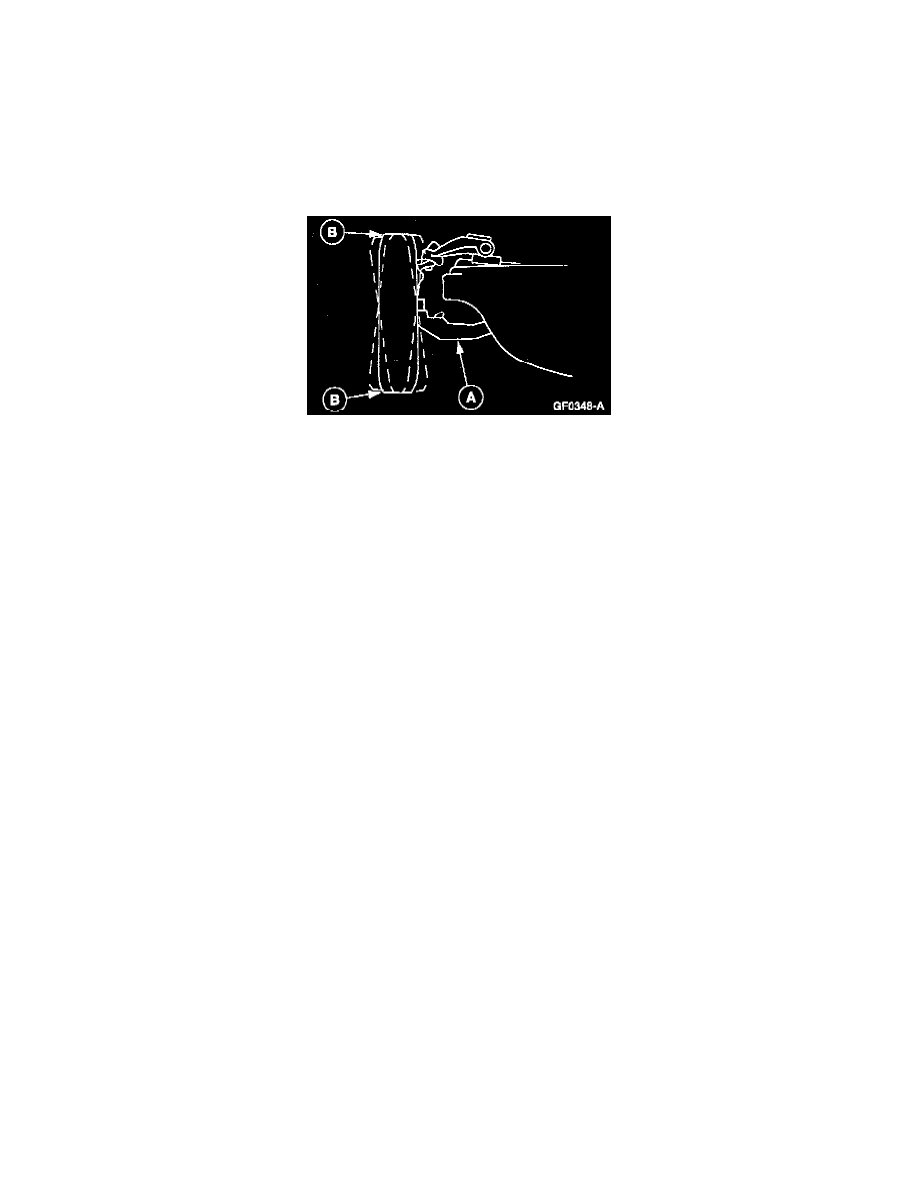Expedition 2WD V8-281 4.6L VIN W EFI (1997)

Ball Joint: Testing and Inspection
Ball Joint, Lower
WARNING: THE ELECTRICAL POWER TO THE AIR SUSPENSION SYSTEM MUST BE SHUT OFF PRIOR TO HOISTING,
JACKING OR TOWING AN AIR SUSPENSION VEHICLE. THIS CAN BE ACCOMPLISHED BY TURNING OFF THE AIR SUSPENSION
SWITCH LOCATED IN THE RH KICK PANEL AREA. FAILURE TO DO SO MAY RESULT IN UNEXPECTED INFLATION OR
DEFLATION OF THE AIR SPRINGS WHICH MAY RESULT IN SHIFTING OF THE VEHICLE DURING THESE OPERATIONS.
NOTE: Prior to performing any inspection of the front suspension lower arm ball joints or front suspension upper ball joints, adjust the front wheel
bearings.
1. Raise the vehicle and (A) place safety stands under the suspension arm axle beneath the spring.
2. Have an assistant grasp the (B) lower and upper edge of the tire and move the wheel in and out.
3. While the wheel is being moved, observe the lower spindle arm and the lower part of the axle jaw. A 0.794 mm (1/32 inch) or greater movement
between the lower portion of the suspension arm and the lower spindle arm indicates that the front suspension lower arm ball joint must be
replaced.
NOTE: If equipped with air suspension, reactivate the system by turning on the air suspension switch. Road test the vehicle for normal operation.
4. To check the front suspension upper ball joints, grasp the upper edge of the tire and move the wheel in and out. A 0.794 mm (1/32 inch) or greater
movement between the upper spindle arm and the upper portion of the suspension arm indicates that the front suspension upper ball joint must be
replaced.
